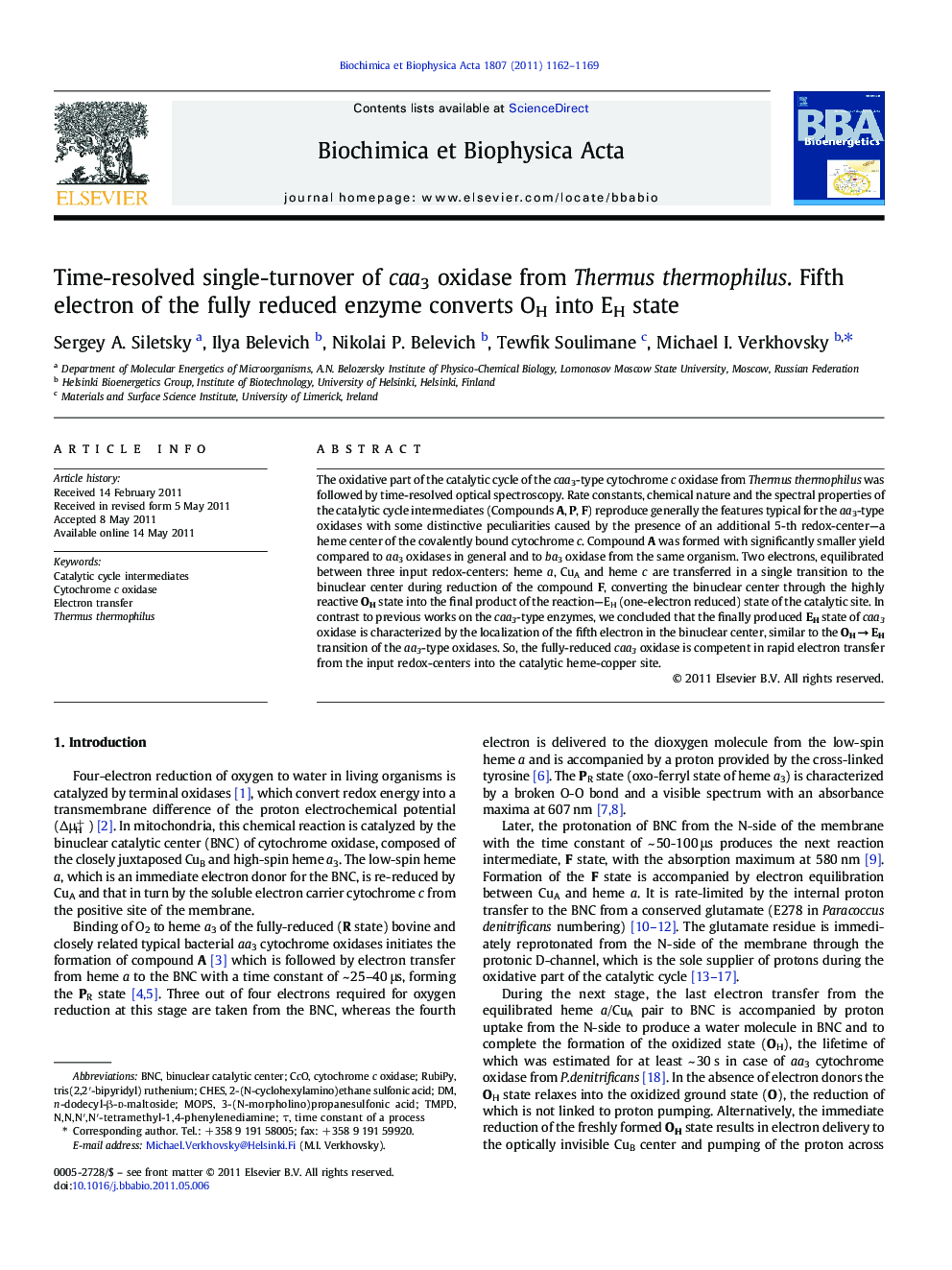| Article ID | Journal | Published Year | Pages | File Type |
|---|---|---|---|---|
| 1942679 | Biochimica et Biophysica Acta (BBA) - Bioenergetics | 2011 | 8 Pages |
The oxidative part of the catalytic cycle of the caa3-type cytochrome c oxidase from Thermus thermophilus was followed by time-resolved optical spectroscopy. Rate constants, chemical nature and the spectral properties of the catalytic cycle intermediates (Compounds A, P, F) reproduce generally the features typical for the aa3-type oxidases with some distinctive peculiarities caused by the presence of an additional 5-th redox-center—a heme center of the covalently bound cytochrome c. Compound A was formed with significantly smaller yield compared to aa3 oxidases in general and to ba3 oxidase from the same organism. Two electrons, equilibrated between three input redox-centers: heme a, CuA and heme c are transferred in a single transition to the binuclear center during reduction of the compound F, converting the binuclear center through the highly reactive OH state into the final product of the reaction—EH (one-electron reduced) state of the catalytic site. In contrast to previous works on the caa3-type enzymes, we concluded that the finally produced EH state of caa3 oxidase is characterized by the localization of the fifth electron in the binuclear center, similar to the OH → EH transition of the aa3-type oxidases. So, the fully-reduced caa3 oxidase is competent in rapid electron transfer from the input redox-centers into the catalytic heme-copper site.
Research highlights► We performed kinetic study of electron and proton transfer in the 5 electron containing caa3 oxidase ► For the decomposition of the molecular events spectra of the individual enzyme states were obtained ► Decomposition shows that additional fifth electron ends up in the catalytic center of the enzyme ► The delivery of the additional electron to the catalytic center is coupled to the proton pumping.
